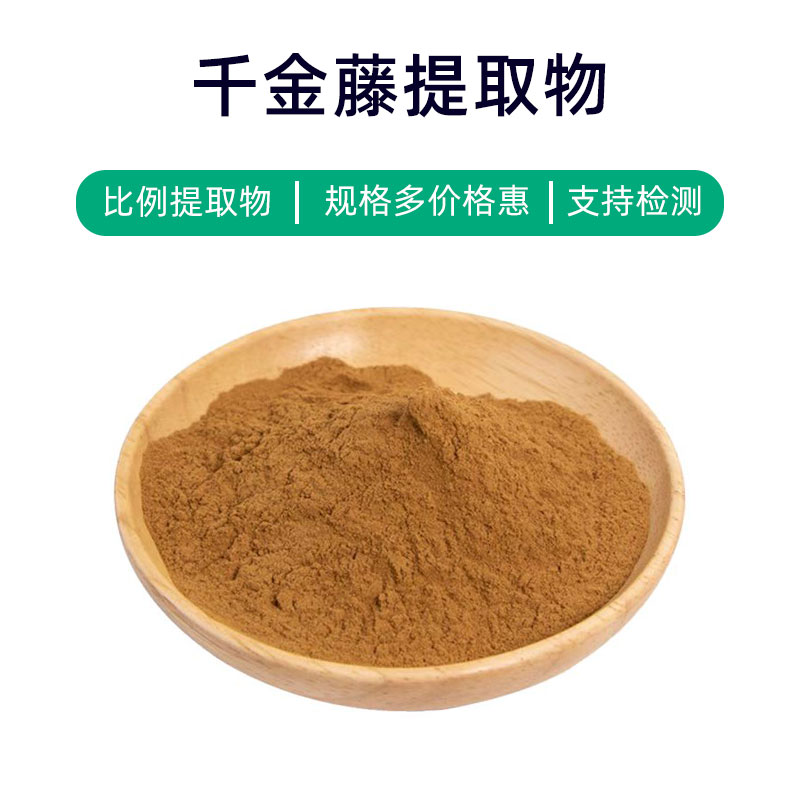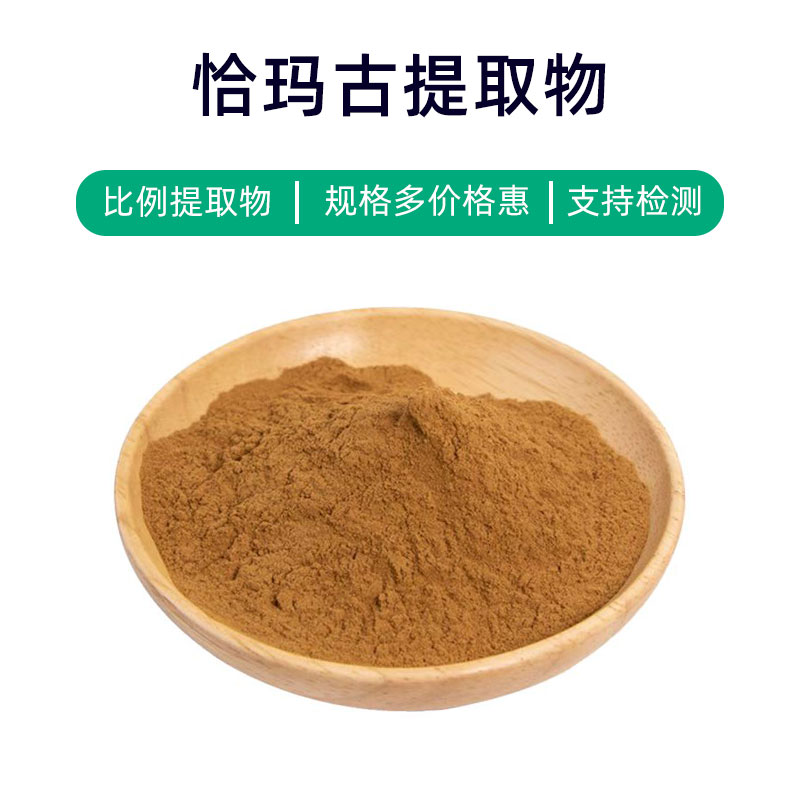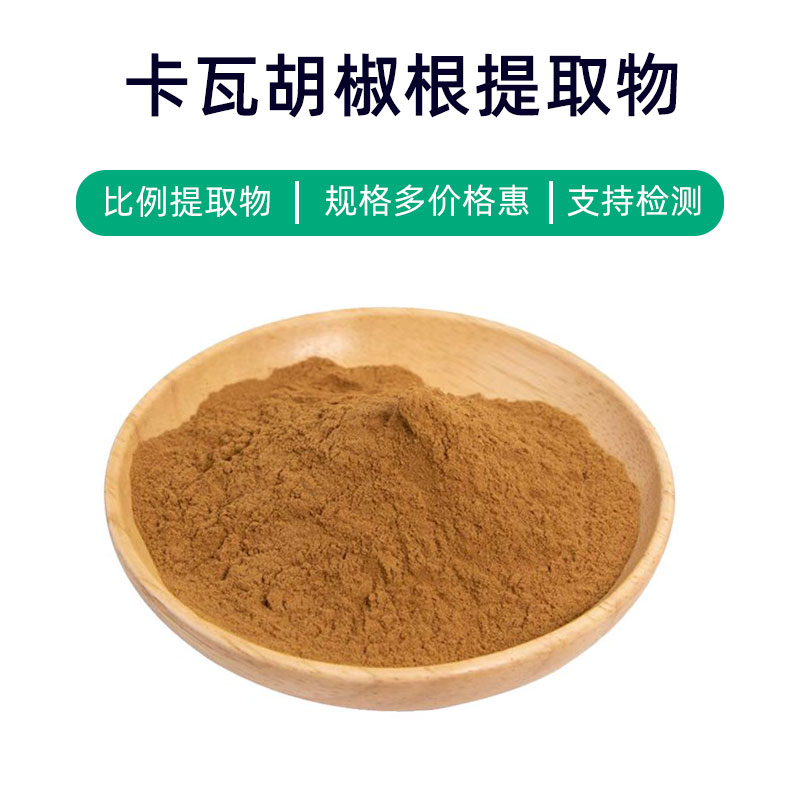Introduction to Red Clover Extract Product
Red clover extract is a natural plant component extracted from red clover (Trifolium pratense). Its main components include trifolin, isoflavonoid compounds, soy isoflavones, betaine, etc. Red clover extract is widely used in industries such as pharmaceuticals, health supplements, cosmetics, and food.
In the fields of pharmaceuticals and health supplements, red clover extract is considered to have multiple benefits. Among them, the isoflavonoid compounds it contains are thought to help relieve menopausal discomfort symptoms, improve women's menstrual cycles, regulate estrogen levels, and protect cardiovascular health. Additionally, it is also used to relieve anxiety and improve sleep quality.
In the cosmetics field, red clover extract is commonly used in skin - care products because of its antioxidant, anti - inflammatory, and moisturizing properties. It can help reduce skin inflammation, soothe sensitive skin, and enhance skin luster and elasticity.
In the food field, red clover extract can be used as a food additive to improve the taste and quality of food. It can also be used as a nutritional supplement and added to various beverages, seasonings, and nutritional health products to enhance their nutritional value and functionality.
In general, as a natural plant extract, red clover extract has broad application prospects in multiple fields. Its rich nutritional components and various effects have won it extensive attention and application.
Production Process of Red Clover Extract
The production process of red clover extract usually includes the following steps:
- Raw Material Collection and Preparation: Select high - quality red clover as the raw material, usually using fresh herbaceous plants to ensure their quality and nutritional components. After collection, pre - treatment work such as cleaning and removing impurities should be carried out.
- Extraction Process: Extraction is one of the key steps in the production of red clover extract. Common extraction methods include water extraction, ethanol extraction, or supercritical fluid extraction. Among them, the water extraction method is one of the more common methods, which is simple to operate, low in cost, and suitable for large - scale production.
- Concentration and Filtration: The extracted solution needs to be concentrated, usually using techniques such as vacuum concentration or thin - film concentration. The concentrated solution should be filtered to remove residues and impurities to ensure the purity and quality of the extract.
- Refinement and Purification: To improve the purity and activity of the extract, methods such as gel filtration, resin adsorption, and crystallization can be used for refinement and purification.
- Drying and Grinding: The refined extract needs to be dried to remove moisture and maintain stability. Common drying methods include spray drying and vacuum drying. The dried extract can be ground or pulverized to obtain the desired particle size and shape.
- Quality Inspection and Packaging: Finally, conduct quality inspections on the extract, including testing component content, purity, microbial limits, and other indicators to ensure that the product meets relevant standards and requirements. Qualified extracts will be packaged. Common packaging methods include aluminum foil bags and plastic barrels to ensure the safety of product storage and transportation.
The above is a general production process for red clover extract. The specific production process may vary depending on factors such as the manufacturer's technical level, equipment conditions, and product requirements.
Efficacy, Effects, and Side Effects of Red Clover Extract
Red clover extract is a commonly used herbal plant extract with multiple efficacy and effects, mainly including the following aspects:
- Antioxidant Effect: Red clover extract is rich in flavonoid compounds and polyphenolic substances, which have strong antioxidant effects. It can scavenge free radicals in the body, reduce oxidative stress damage to cells, and help delay the aging process.
- Anti - inflammatory and Antibacterial Effects: The active components in red clover extract have anti - inflammatory and antibacterial effects. They can inhibit the occurrence and development of inflammatory reactions, relieve symptoms of skin inflammation and eczema, and have certain antibacterial effects, which can be used for the prevention and treatment of skin infections.
- Protecting Liver Function: Studies have shown that some components in red clover extract have the effect of protecting liver function. They can reduce liver cell damage and necrosis, promote liver cell regeneration, and have a certain effect on the prevention and treatment of liver damage.
- Regulating Blood Sugar and Blood Lipids: Some studies have shown that red clover extract can regulate blood sugar and blood lipid levels, reduce abnormal blood sugar and blood lipid levels, and help prevent and improve metabolic diseases such as diabetes and hyperlipidemia.
- Improving Skin Health: Red clover extract has moisturizing, antioxidant, and anti - inflammatory effects on the skin. It can promote skin regeneration and repair, improve problems such as dry.
Application Scenarios and Usage of Melilotus Officinalis Extract
Melilotus officinalis extract is widely used in the pharmaceutical, food, and cosmetic industries. Below are its specific applications and recommended usage in each field:
1. Pharmaceutical Applications
- Uses: Commonly used in traditional Chinese medicine for treating respiratory infections, digestive disorders, and skin inflammations.
- Usage and Dosage: Can be taken orally or applied externally. For oral use, the general dosage is 3–9 grams per dose, decocted in water before consumption. For external use, it can be formulated into ointments, medicinal wines, or decoctions and applied to affected areas 2–3 times daily.
2. Food Applications
- Uses: Utilized as a food additive to impart unique flavors and health benefits.
- Usage and Dosage: The recommended dosage depends on the food type and application needs, typically ranging from 0.05–0.1 grams per kilogram of food.
3. Cosmetic Applications
- Uses: Frequently incorporated into cosmetics for its antioxidant, anti-inflammatory, and soothing properties, making it a valuable ingredient in skincare products and shampoos.
- Usage and Dosage: The appropriate amount varies depending on the formulation and desired effects, generally ranging from 1% to 5%.
Note: The usage and dosage may differ across different applications. It is advisable to follow product instructions or professional medical guidance. Additionally, individual differences and potential allergic reactions should be taken into consideration. Discontinue use immediately and consult a doctor if any adverse reactions occur.
Introduction to the Source Plant, Distribution, and Growth Environment of Melilotus Officinalis Extract
Melilotus officinalis, commonly known as sweet clover, fragrant clover, or yellow melilot, is a herbaceous plant belonging to the Fabaceae family. It is a widely cultivated or wild perennial herb.
Plant Characteristics
Melilotus officinalis typically grows to a height of 30–120 cm, with slender leaves and racemose inflorescences. Its leaves are pinnately compound with ovate or oblong leaflets. The plant produces small yellow flowers arranged in racemose panicles, and its fruit is a leguminous pod.
Distribution
Originally native to Europe and Western Asia, Melilotus officinalis is now widely distributed across the globe, including North and South America, Africa, Australia, and Asia. In Europe, it primarily grows in temperate regions and is commonly found in fields, grasslands, roadsides, dry wastelands, and sandy areas.
Growth Environment
Melilotus officinalis thrives in well-drained, fertile soils with abundant sunlight. It is highly adaptable to different soil types, preferring neutral to alkaline soils. The plant exhibits strong drought tolerance and can survive in arid regions. However, it is not cold-resistant and does not adapt well to low-temperature environments, typically growing in areas below 2000 meters in altitude.
Reproduction and Growth
The plant primarily reproduces through seeds, which germinate rapidly. It has a short growth cycle, with the most vigorous growth occurring in spring and summer. Its well-developed root system efficiently absorbs water and nutrients, promoting healthy plant growth. Under suitable environmental conditions, Melilotus officinalis quickly expands and forms dense vegetation, offering both ecological and medicinal value.
Processing and Storage of Melilotus Officinalis Extract
Processing
The production of Melilotus officinalis extract generally follows these steps:
- Harvesting: Fresh Melilotus officinalis plants are collected.
- Cleaning and Impurity Removal: The raw materials are thoroughly cleaned to remove impurities.
- Grinding and Crushing: The cleaned plant material is ground, crushed, or cut to enhance extraction efficiency.
- Extraction: Suitable extraction methods such as water extraction or ethanol extraction are used to obtain the extract.
- Filtration and Concentration: The extract is filtered, concentrated, and then dried to produce the final extract.
Storage and Preservation
Melilotus officinalis extract should be stored in a cool, dry, and well-ventilated place, away from direct sunlight and high temperatures to maintain its quality and stability. It should be kept in a sealed container to prevent moisture and oxygen exposure, thereby extending its shelf life.
Monica Sun is a seasoned expert in the plant extraction industry with over a decade of experience in research and production. She specializes in the extraction and purification of plant active ingredients, focusing on driving innovation in natural product applications. Monica has participated in the development of multiple functional plant extracts, delivering high-value natural raw material solutions for the health food, pharmaceutical, and dietary supplement sectors.


















